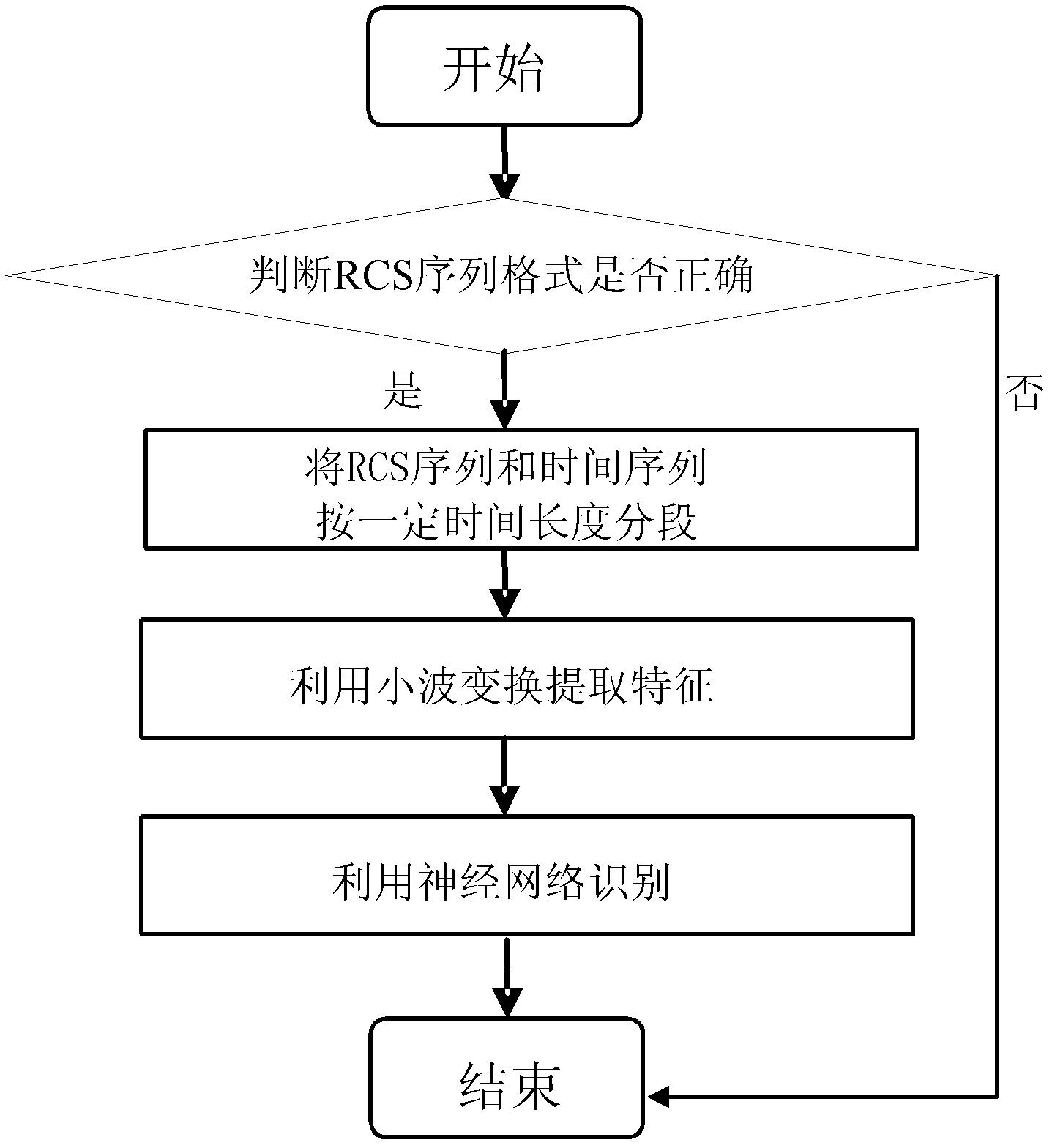Spacecraft attitude stability judgement method utilizing RCS (radar cross section)
A discriminative method and a stable technology, applied in the direction of re-radiation, equipment, radio wave reflection/re-radiation, etc., can solve the problems of low recognition rate, fuzzy recognition rate, low operating efficiency, etc., and achieve fast operating speed Effect
- Summary
- Abstract
- Description
- Claims
- Application Information
AI Technical Summary
Problems solved by technology
Method used
Image
Examples
example
[0070] First, a discrete wavelet transform is performed on a measurement arc of the spacecraft RCS time series, and then the seven statistical features after the wavelet transform listed above are extracted, including the ratio feature of the maximum value and the mean value, the maximum singular value feature, the variance feature and the four centers Then the seven statistical features are normalized, and finally the attitude stability of the spacecraft is judged by the BP neural network according to the processed feature values.
[0071] Firstly, the RCS wavelet transform features are extracted. Table 1 and Table 2 list the wavelet transform feature values before and after a certain satellite fails.
[0072] Table 1 Eigenvalues of wavelet transform of satellite three-axis stable attitude (reflection angle 70°~80°)
[0073]
[0074] Table 2 Eigenvalues of satellite roll attitude wavelet transform (reflection angle 70°~80°)
[0075]
PUM
 Login to View More
Login to View More Abstract
Description
Claims
Application Information
 Login to View More
Login to View More - R&D
- Intellectual Property
- Life Sciences
- Materials
- Tech Scout
- Unparalleled Data Quality
- Higher Quality Content
- 60% Fewer Hallucinations
Browse by: Latest US Patents, China's latest patents, Technical Efficacy Thesaurus, Application Domain, Technology Topic, Popular Technical Reports.
© 2025 PatSnap. All rights reserved.Legal|Privacy policy|Modern Slavery Act Transparency Statement|Sitemap|About US| Contact US: help@patsnap.com



